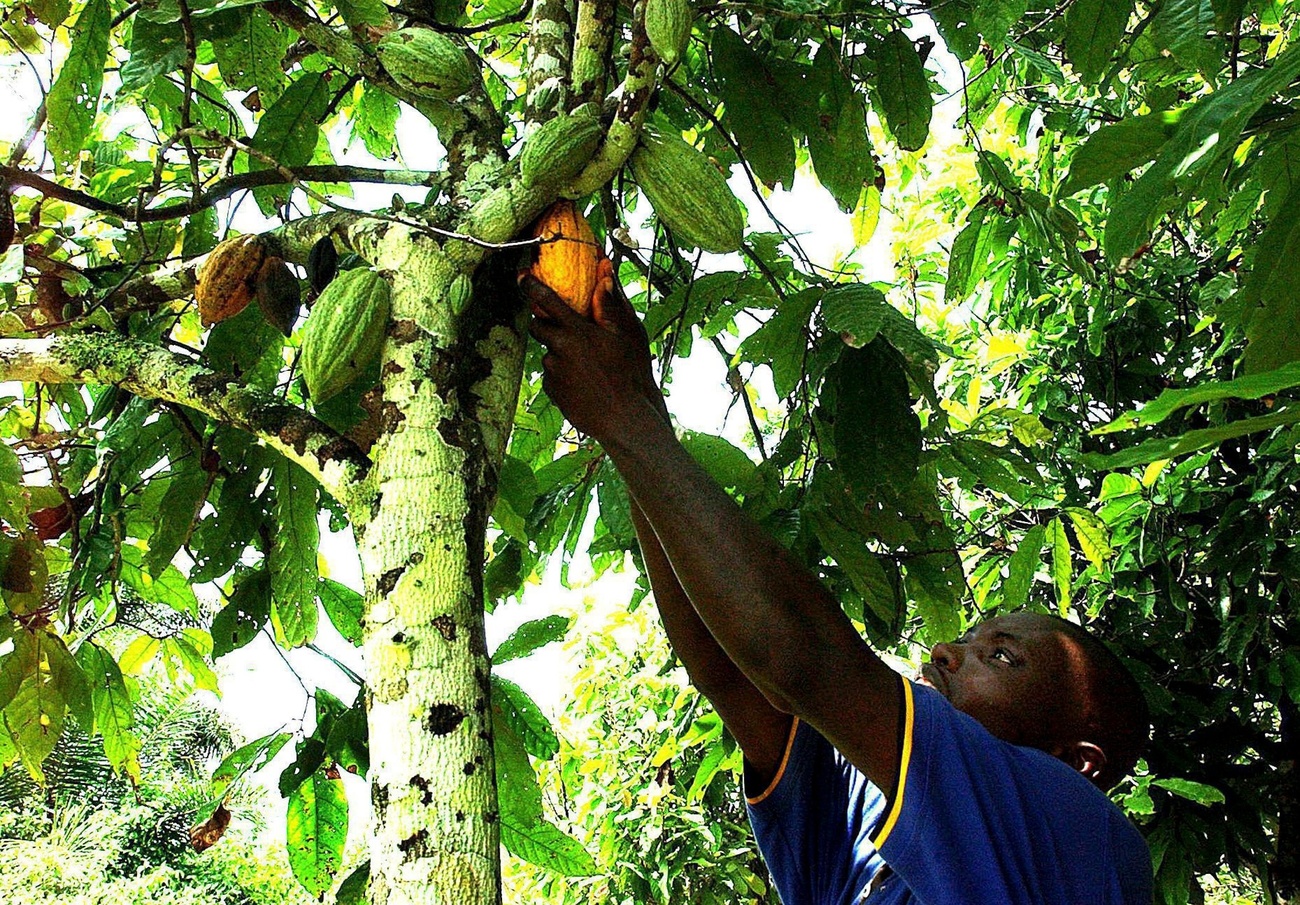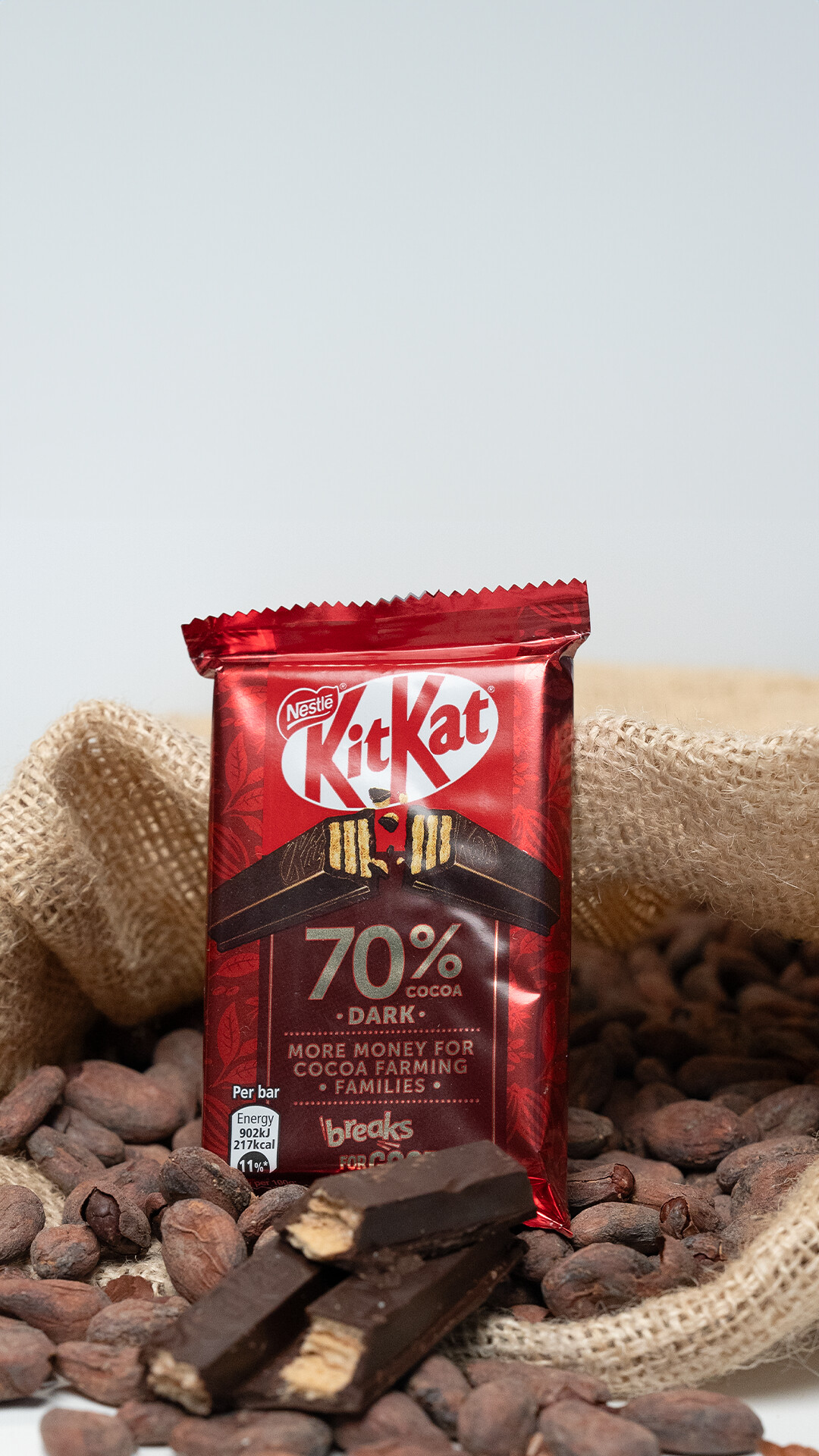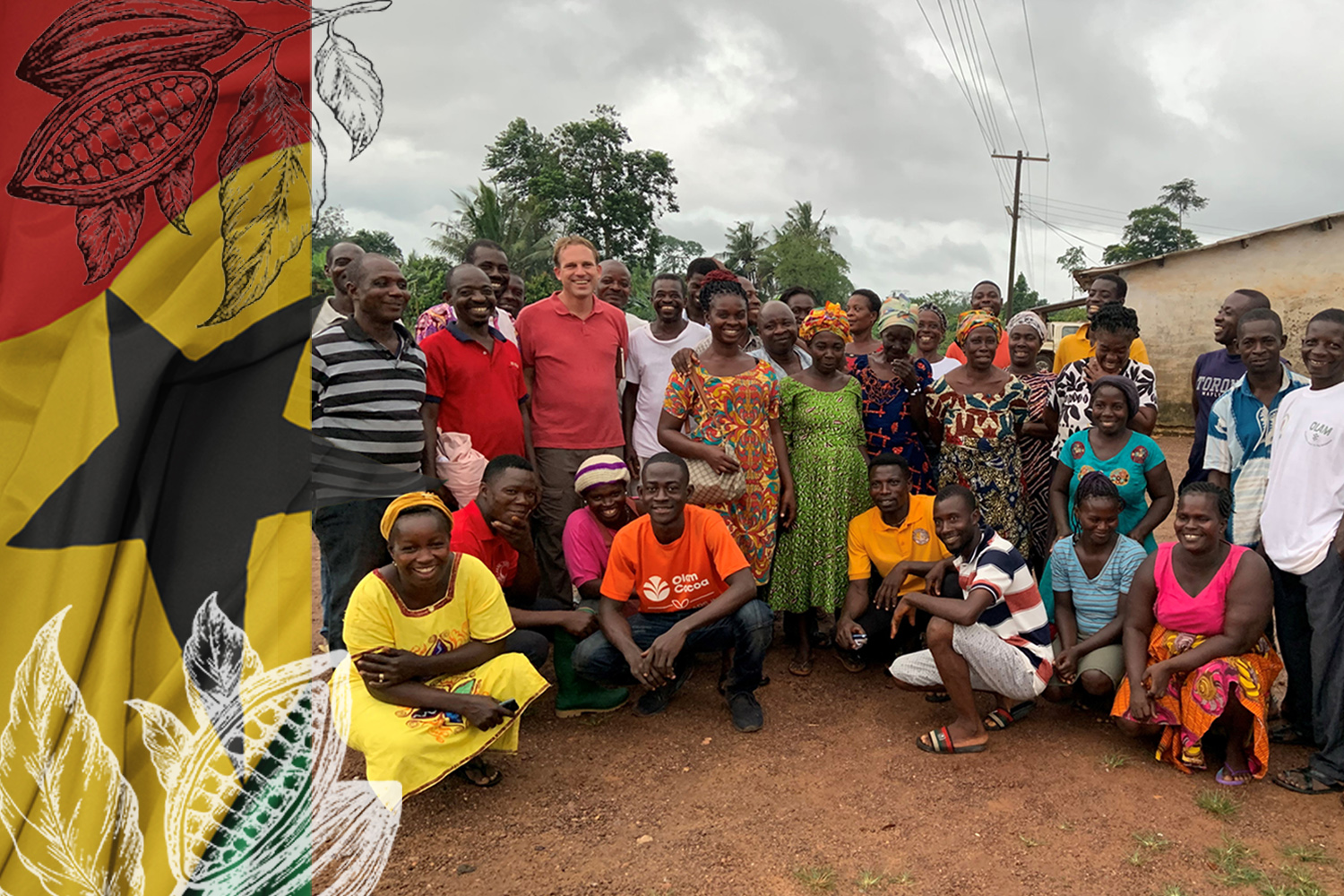
Direct payments help cocoa farmers but living income remains out of reach

Swiss multinational Nestlé’s strategy of offering financial incentives to cocoa farmers has helped boost household income but still falls short of a living income.

In January Nestlé announced the release of a new KitKat chocolate bar for the European market. It wasn’t a new flavour or a more decadent version. Instead, it was a KitKat manufactured from cocoa beans sourced entirely from select farmers from Ivory Coast who were given financial incentives for reaching certain targets.
Ivory Coast accounts for around 45% of the world’s cocoa production, which brings in export revenue of $3.5 billion (CHF3.2 billion) a year. But according to surveys carried out in 2019 by Cocoa Life, cocoa farmers in the country make just $1.23 a day, far less than the living wage benchmark of $2.55 a day.
The 10,000 Ivorian farmers enrolled in Nestlé’s Income Accelerator programmeExternal link received a cash transfer of up to €500 (CHF490) a year for good agricultural practices such as regularly pruning their cocoa trees or for sending their children to school. Launched in 2022, it was the first direct payment to farmers of this kind made by a chocolate company. One of the main objectives was to help cocoa producers increase their net incomes and not abandon cocoa farming altogether.
“The objective of our income accelerator programme is to help cocoa-farming families improve their livelihood by creating a virtuous cycle. It rewards different practices, including activities that increase crop productivity and help secure additional sources of income, which are crucial for bridging the living income gap,” a Nestlé spokesperson told SWI swissinfo.ch.
Report card
So how did this pilot project work out for the farmers? Last week, the KIT Royal Tropical Institute published the results External linkof its assessment of the Income Accelerator programme. A total of 1,500 farmers participating in the programme were surveyed in the study, as well as 500 non-participant farmers for comparison.
According to the report, between 2022 and 2023, the proportion of participating households earning a living income (estimated at $7,654 a year) increased from 10% to 20% . Their net household income increased by $1,320 due to increased cocoa productivity thanks to pruning, as well as having money to invest in other income streams.
“The initial results published by the KIT Institute are very encouraging as they indicate that our approach can have a positive impact on cocoa-farming families, despite encountering some challenges along the way,” says Nestlé.
Nestlé will expand the income accelerator programmer to Ghana this year to cover a total of 30,000 families with plans to benefit 160,000 families by 2030.
Living income gap
While more money for farmers is good news, the report also shows that the average beneficiary farmer was still $2,780 short of earning a living income ($3,921 for non-participants). The Living Income Community of Practice (LICoP) alliance defines living income as “the net annual income required for a household in a particular place to afford a decent standard of living for all members of that household.” It covers the costs of food, water, housing, education, healthcare, transport, clothing, and a margin for unexpected events, and is intended as a stepping stone towards achieving prosperous incomes.
“The Income Accelerator is one of the more progressive attempts by chocolate companies, but they are willing to do everything but pay a fair price for cocoa,” says Antonie Fountain, managing director of the Netherlands-based Voice of Organisations in Cocoa (VOICE Network), a global network of NGOs and trade unions working on sustainability in cocoa.
According to Fountain, the KIT Institute report is progress of a kind as it should help Nestlé calculate how much more they need to pay the farmers.
“They can use the infrastructure they created for money transfers to pay a fair price,” he says.

More
Five things Africa can do to make the most of its cocoa
Cocoa farmers have not been able to reap the benefits of recent record cocoa prices on the futures market that have more than doubled in the past year due to poor harvests. Only in April did the Ivorian agricultural ministry announce a 50% increase in farmgate prices to CFA1,500 (about CHF2.25) per kilo for the smaller mid-crop harvest (that runs from April until the end of September).
The agriculture minister Kobenan Kouassi Adjoumani hailed it as a “historic price” for the mid-crop that had never been seen before in the Ivorian cocoa industry. However, Fountain is sceptical of the positive impact this move will have on the living incomes of cocoa farmers.
“The farmgate prices may have increased, but there is not enough volume to sell due to a poor harvest, which means the farmers are not really better off,” he says.
Edited by Reto Gysi von Wartburg/ts

In compliance with the JTI standards
More: SWI swissinfo.ch certified by the Journalism Trust Initiative
































You can find an overview of ongoing debates with our journalists here . Please join us!
If you want to start a conversation about a topic raised in this article or want to report factual errors, email us at english@swissinfo.ch.